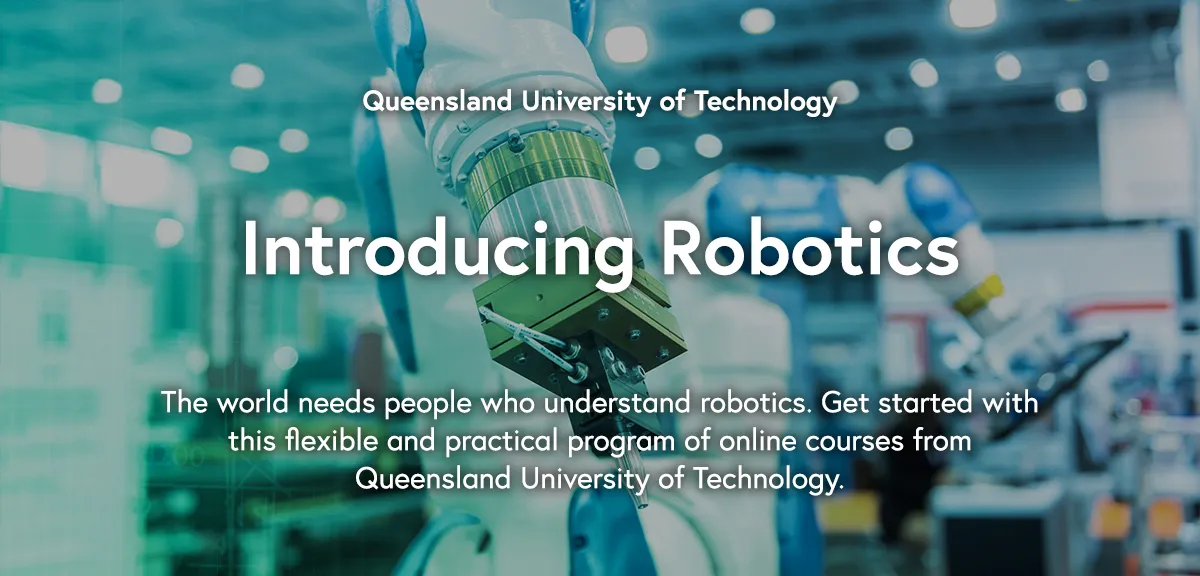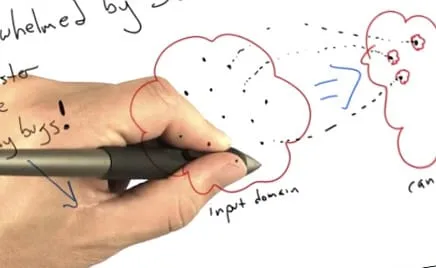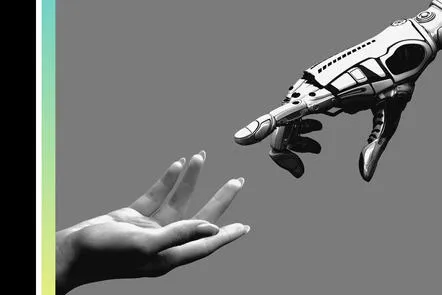
Introducing Robotics Program 
This course introduces students to the world of robotics. It covers topics such as the ethical considerations of using robots, the mathematical principles of robot arm manipulators, and the relationship between robot joint coordinates and robot tool pose. Students will also learn how to construct and program a working robot. By the end of the course, students will have a better understanding of robotics and its potential applications. ▼
ADVERTISEMENT
Course Feature
![]() Cost:
Cost:
Free
![]() Provider:
Provider:
Futurelearn
![]() Certificate:
Certificate:
No Information
![]() Language:
Language:
English
![]() Start Date:
Start Date:
Self Paced
Course Overview
❗The content presented here is sourced directly from Futurelearn platform. For comprehensive course details, including enrollment information, simply click on the 'Go to class' link on our website.
Updated in [May 25th, 2023]
This Introducing Robotics Program provides an overview of robotics and its applications. Participants will gain an understanding of what robots are and what they can do, as well as the ethical considerations of using robots to help solve societal challenges. Additionally, participants will reflect on the future role and development of robotics in human society.
The course will also cover the mathematical principles of robot arm manipulators, including the position and orientation of objects and how they move, as well as the relationship between robot joint coordinates and robot tool pose. Participants will apply these mathematical, algorithmic and control principles to implement a working robot through physical construction and software development.
[Applications]
After completing this course, students should be able to apply the knowledge and skills they have acquired to develop robotic systems for a variety of applications. They should be able to design and implement robotic systems that can interact with their environment, as well as develop algorithms for autonomous navigation and manipulation. Additionally, they should be able to understand the ethical considerations of using robots to help solve societal challenges. Finally, they should be able to reflect on the future role and development of robotics in human society.
[Career Paths]
1. Robotics Engineer: Robotics Engineers design, build, and maintain robots and robotic systems. They use their knowledge of engineering principles, mathematics, and computer science to develop robots that can perform a variety of tasks. Robotics Engineers are in high demand as the use of robots in industry and other areas continues to grow.
2. Robotics Technician: Robotics Technicians are responsible for the maintenance and repair of robots and robotic systems. They use their knowledge of robotics and engineering principles to troubleshoot and repair robots. Robotics Technicians are in high demand as the use of robots in industry and other areas continues to grow.
3. Robotics Programmer: Robotics Programmers are responsible for writing the code that controls robots and robotic systems. They use their knowledge of programming languages, mathematics, and engineering principles to develop the code that allows robots to perform their tasks. Robotics Programmers are in high demand as the use of robots in industry and other areas continues to grow.
4. Robotics Scientist: Robotics Scientists are responsible for researching and developing new robotic technologies. They use their knowledge of robotics, mathematics, and engineering principles to develop new robotic systems and technologies. Robotics Scientists are in high demand as the use of robots in industry and other areas continues to grow.
[Education Paths]
1. Bachelor of Science in Robotics: This degree program provides students with a comprehensive understanding of robotics technology, including the design, construction, and programming of robots. Students will learn about the ethical considerations of using robots to help solve societal challenges, as well as the mathematical, algorithmic, and control principles of robot arm manipulators. This degree program is becoming increasingly popular as robotics technology continues to develop and become more widely used in industry and research.
2. Master of Science in Robotics: This degree program provides students with an advanced understanding of robotics technology, including the design, construction, and programming of robots. Students will learn about the ethical considerations of using robots to help solve societal challenges, as well as the mathematical, algorithmic, and control principles of robot arm manipulators. This degree program is becoming increasingly popular as robotics technology continues to develop and become more widely used in industry and research.
3. Doctor of Philosophy in Robotics: This degree program provides students with an in-depth understanding of robotics technology, including the design, construction, and programming of robots. Students will learn about the ethical considerations of using robots to help solve societal challenges, as well as the mathematical, algorithmic, and control principles of robot arm manipulators. This degree program is becoming increasingly popular as robotics technology continues to develop and become more widely used in industry and research.
4. Master of Engineering in Robotics: This degree program provides students with a comprehensive understanding of robotics technology, including the design, construction, and programming of robots. Students will learn about the ethical considerations of using robots to help solve societal challenges, as well as the mathematical, algorithmic, and control principles of robot arm manipulators. This degree program is becoming increasingly popular as robotics technology continues to develop and become more widely used in industry and research.
Course Provider

Provider Futurelearn's Stats at AZClass
Discussion and Reviews
0.0 (Based on 0 reviews)
Explore Similar Online Courses

Software Testing

Computer Methods Of Structural Analysis Of Offshore Structures

Python for Informatics: Exploring Information

Social Network Analysis

Introduction to Systematic Review and Meta-Analysis

The Analytics Edge

DCO042 - Python For Informatics

Causal Diagrams: Draw Your Assumptions Before Your Conclusions

Whole genome sequencing of bacterial genomes - tools and applications

Robotic Drives & Physics: Robotics learn by building III

Robotics: Aerial Robotics

MedTech: AI and Medical Robots Course
 Related Categories
Related Categories
 Popular Providers
Popular Providers
Quiz
 Submitted Sucessfully
Submitted Sucessfully
1. What is the main purpose of introducing robotics program?
2. What is the relationship between robot joint coordinates and robot tool pose?
3. What is the main goal of the robotics program?


Start your review of Introducing Robotics Program